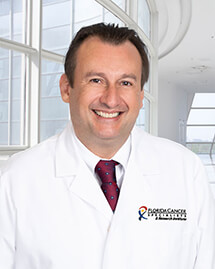Author(s): Kathryn P. Lowry, MD1; H. Amarens Geuzinge, MSc2; Natasha K. Stout, PhD3; et alOguzhan Alagoz, PhD4; John Hampton, MS5; Karla Kerlikowske, MD6,7; Harry J. de Koning, MD, PhD2; Diana L. Miglioretti, PhD8; Nicolien T. van Ravesteyn, PhD2; Clyde Schechter, MD9; Brian L. Sprague, PhD10,11; Anna N. A. Tosteson, PhD12; Amy Trentham-Dietz, PhD5; Donald Weaver, MD13; Martin J. Yaffe, PhD14,15; Jennifer M. Yeh, PhD16; Fergus J. Couch, PhD17; Chunling Hu, MD, PhD17; Peter Kraft, PhD18; Eric C. Polley, PhD19; Jeanne S. Mandelblatt, MD, MPH20; Allison W. Kurian, MD, MSc21,22; Mark E. Robson, MD23; for the Breast Working Group of the Cancer Intervention and Surveillance Modeling Network (CISNET), in collaboration with the Breast Cancer Surveillance Consortium (BCSC), and the Cancer Risk Estimates Related to Susceptibility (CARRIERS) Consortium
A Comparative Modeling Analysis
ABSTRACT
IMPORTANCE
Screening mammography and magnetic resonance imaging (MRI) are recommended for women with ATM, CHEK2, and PALB2 pathogenic variants. However, there are few data to guide screening regimens for these women.
OBJECTIVE
To estimate the benefits and harms of breast cancer screening strategies using mammography and MRI at various start ages for women with ATM, CHEK2, and PALB2 pathogenic variants.
DESIGN, SETTING, AND PARTICIPANTS
This comparative modeling analysis used 2 established breast cancer microsimulation models from the Cancer Intervention and Surveillance Modeling Network (CISNET) to evaluate different screening strategies. Age-specific breast cancer risks were estimated using aggregated data from the Cancer Risk Estimates Related to Susceptibility (CARRIERS) Consortium for 32 247 cases and 32 544 controls in 12 population-based studies. Data on screening performance for mammography and MRI were estimated from published literature. The models simulated US women with ATM, CHEK2, or PALB2 pathogenic variants born in 1985.
INTERVENTIONS
Screening strategies with combinations of annual mammography alone and with MRI starting at age 25, 30, 35, or 40 years until age 74 years.
MAIN OUTCOMES AND MEASURES
Estimated lifetime breast cancer mortality reduction, life-years gained, breast cancer deaths averted, total screening examinations, false-positive screenings, and benign biopsies per 1000 women screened. Results are reported as model mean values and ranges.
RESULTS
The mean model-estimated lifetime breast cancer risk was 20.9% (18.1%-23.7%) for women with ATM pathogenic variants, 27.6% (23.4%-31.7%) for women with CHEK2 pathogenic variants, and 39.5% (35.6%-43.3%) for women with PALB2 pathogenic variants. Across pathogenic variants, annual mammography alone from 40 to 74 years was estimated to reduce breast cancer mortality by 36.4% (34.6%-38.2%) to 38.5% (37.8%-39.2%) compared with no screening. Screening with annual MRI starting at 35 years followed by annual mammography and MRI at 40 years was estimated to reduce breast cancer mortality by 54.4% (54.2%-54.7%) to 57.6% (57.2%-58.0%), with 4661 (4635-4688) to 5001 (4979-5023) false-positive screenings and 1280 (1272-1287) to 1368 (1362-1374) benign biopsies per 1000 women. Annual MRI starting at 30 years followed by mammography and MRI at 40 years was estimated to reduce mortality by 55.4% (55.3%-55.4%) to 59.5% (58.5%-60.4%), with 5075 (5057-5093) to 5415 (5393-5437) false-positive screenings and 1439 (1429-1449) to 1528 (1517-1538) benign biopsies per 1000 women. When starting MRI at 30 years, initiating annual mammography starting at 30 vs 40 years did not meaningfully reduce mean mortality rates (0.1% [0.1%-0.2%] to 0.3% [0.2%-0.3%]) but was estimated to add 649 (602-695) to 650 (603-696) false-positive screenings and 58 (41-76) to 59 (41-76) benign biopsies per 1000 women.
CONCLUSIONS AND RELEVANCE
This analysis suggests that annual MRI screening starting at 30 to 35 years followed by annual MRI and mammography at 40 years may reduce breast cancer mortality by more than 50% for women with ATM, CHEK2, and PALB2 pathogenic variants. In the setting of MRI screening, mammography prior to 40 years may offer little additional benefit.
Author Affiliations
1Department of Radiology, University of Washington, Seattle Cancer Care Alliance, Seattle
2Department of Public Health, Erasmus University Medical Center, Rotterdam, the Netherlands
3Department of Population Medicine, Harvard Medical School, Harvard Pilgrim Healthcare Institute, Boston, Massachusetts
4Department of Industrial and Systems Engineering, University of Wisconsin–Madison, Madison
5Carbone Cancer Center, Department of Population Health Sciences, School of Medicine and Public Health, University of Wisconsin–Madison, Madison
6Department of Medicine, University of California, San Francisco
7Department of Epidemiology and Biostatistics, University of California, San Francisco
8Division of Biostatistics, Department of Public Health Sciences, University of California, Davis, Davis
9Department of Family and Social Medicine, Albert Einstein College of Medicine, Bronx, New York
10Department of Surgery, University of Vermont Cancer Center, University of Vermont Larner College of Medicine, Burlington
11Department of Radiology, University of Vermont Cancer Center, University of Vermont Larner College of Medicine, Burlington
12The Dartmouth Institute for Health Policy and Clinical Practice and Norris Cotton Cancer Center, Geisel School of Medicine at Dartmouth, Lebanon, New Hampshire
13Department of Pathology, University of Vermont Larner College of Medicine, Burlington
14Department of Medical Biophysics, University of Toronto, Toronto, Ontario, Canada
15Department of Medical Imaging, University of Toronto, Toronto, Ontario, Canada
16Department of Pediatrics, Harvard Medical School, Boston Children’s Hospital, Boston, Massachusetts
17Department of Laboratory Medicine and Pathology, Mayo Clinic, Rochester, New York
18Department of Epidemiology, Harvard School of Public Health, Boston, Massachusetts
19Department of Quantitative Health Sciences, Mayo Clinic, Rochester, Minnesota
20Lombardi Comprehensive Cancer Center, Georgetown University Medical Center, Washington, DC
21Department of Medicine, Stanford University, Stanford, California
22Department of Epidemiology and Population Health, Stanford University, Stanford, California
23Department of Breast Oncology, Memorial Sloan Kettering Cancer Center, New York, New York
